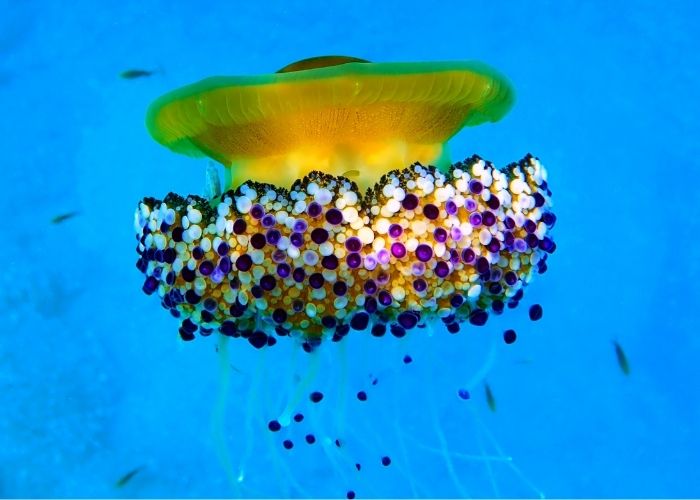Is it possible to predict the presence of jellyfish along the Spanish costa? After seven years of research, the answer turns out to be ‘yes’. Currently, there are prediction models for two jellyfish species in specific areas in Spain.
One of the animals in the spotlight this summer is the jellyfish. Bathers are often far from thrilled with this sea creature, especially since you never know when one floats near you. Annoying or not, the presence of jellyfish will not disappear along the Spanish coast in the coming years. In fact, at certain times of the year there seem to be more – and sometimes even bigger – specimens.
Possible to predict the presence of jellyfish?
How useful would it be to be able to predict the presence of jellyfish? You could then swim in the sea with a little more peace of mind. Researchers have been monitoring the jellyfish population along the Spanish coast for years. And, as such, are trying to find patterns in the presence of various species with the collected data.
The Spanish CSIC is also involved in scientific maritime surveys. And has been keeping various data on the presence of jellyfish populations since 2014. This shows that different species are more represented at certain locations or times than at other locations or times of the year.
Most dangerous jellyfish species around the Balearic Islands
The Portuguese man of war (Physalia physalis) is one of the most dangerous jellyfish species. It is mainly found in the warm waters of the Mediterranean around the Balearic Islands. A few specimens of this species were observed in the spring around the Balearic Islands. However, the presence of the Portuguese man of war depends on surface currents, wind direction, and strength.
Researchers have now found sufficient links between these factors and the arrival of the Portuguese man of war from the Atlantic to the Mediterranean. Thanks to all this data, it is possible to create models that predict where the Portuguese man of war will go once it enters the Mediterranean via the Strait of Gibraltar.
More predictions possible with longer-term data
Researchers report to the Spanish newspaper La Vanguardia that it is possible to make a predictive model for many jellyfish species. But that this requires longer-term data. These models can then be used to predict the likelihood of certain jellyfish species occurring along a specific coastal area in Spain.
Currently, predictive models have been developed for two jellyfish species for two areas. These are the Mirrored Jellyfish (Cotylorhiza tuberculata) in the lagoon of the Mar Menor and the Portuguese Man of War in the Mediterranean.


